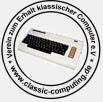Hallo zusammen,
es wird mal wieder Schwarmwissen gebraucht. Bei der Suche nach der Speichererweiterung für den HX-20 habe ich mal das HX-20 Micro-Terminal (Danke Christian) in Betrieb genommen. MIt dem Sony Monitor gibt es auch ein brauchbares Bild. Nun wollte ich das auch an verschiedenen Fernsehern ausprobieren, habe bei vier verschiedenen Modellen auch über den Sendersuchlauf keinen Erfolg gehabt. Gibt es da Ideen, an dem Sony kann ich keine Frequenz erkennen, da ist einfach ein Bild da ![]()
Speziell an B&O MX 6000 hätte ich gern ein Bild, für den Neovo X-15A habe ich noch kein passendes Netzteil.
Mit freundlichen Grüßen
Matthias

